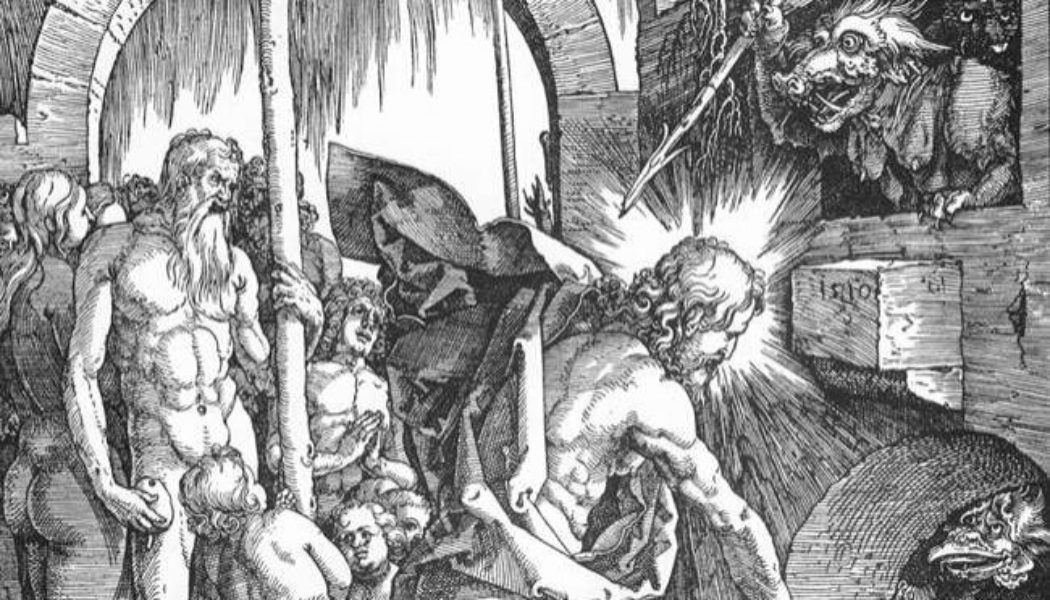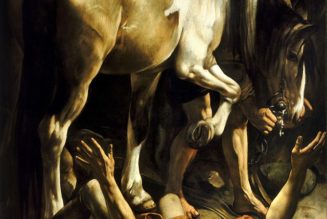By Clement Harrold

In reciting the Apostles Creed, the Christian faithful affirm that Jesus “descended into hell” following His crucifixion and death. But is this literally the case, and does the Creed use the word “hell” in the same way that we understand it today?
The hell which Christ descended into following His death was not quite the same as the hell we imagine today. This is because, prior to Jesus’s saving work, “hell” was a more generic word (known as sheol in Hebrew, or hades in Greek). This generic hell is what is referred to in the Apostles Creed, and while it included the souls of the damned, it wasn’t limited to them.
Prior to Jesus’s descent, hell was a differentiated reality made up of two different spheres. One of those spheres was composed of the souls of the damned who had irreparably decided against Christ, such that even His descent into hell could not save them. These are the souls guilty of the unforgivable sin, i.e., the sin of refusing to embrace God’s forgiveness (see Mk 3:29).
In the New Testament, it is this area of hell which is sometimes described as gehenna, a word which referred to one of the valleys outside Jerusalem which served as the giant garbage heap for the city. In Jesus’s day, gehenna was a vile, awful place in which human and animal waste was continually burning—a place, in other words, where the “worm does not die, and the fire is not quenched” (Mk 9:48).
The other sphere of hell, by contrast, was composed of those souls who were on their way to heaven, but unable to enter it because Christ’s salvific work had not been completed. Hence this second sphere—the sphere of the just—included not only the limbo of the patriarchs (also known as Abraham’s bosom) but also purgatory.
Although some contemporary theologians (most famously, the 20th century Swiss priest Hans Urs von Balthasar) have tried to argue otherwise, the traditional understanding of the Church is that when Christ descended into hell, He went there to liberate only the souls in that second sphere, i.e. the souls of the just, in order that they might gain access to heaven.
Jesus did not go to hell in order to try to redeem the souls of the damned, because they had already made their decision against Him in life. As the Catechism of the Catholic Church explains, “Jesus did not descend into hell to deliver the damned, nor to destroy the hell of damnation, but to free the just who had gone before him” (§633).
Following Christ’s emancipatory descent into hell, hell became a monolithic reality encompassing only the sphere of the damned. (As a result of Christ’s salvific work on the cross, purgatory was opened up as a pathway to heaven. For this reason, we no longer tend to think of purgatory as being a part of hell.)
Hence when the New Testament speaks of gehenna, or of “a punishment of eternal fire” (Jude 7), it is referring specifically to the permanent part of hell, i.e., the place of eternal punishment freely chosen by the damned. This is the hell which continues to perdure even after Christ’s descent. When we talk about hell today, that is the reality we are referring to. But when we talk about hell in the Apostles Creed, the reality we are referring to is much more nuanced.
Further Reading:
https://www.catholic.com/qa/what-he-descended-into-hell-means
https://www.catholic.com/qa/what-is-the-limbo-of-the-fathers
Clement Harrold is a graduate student in theology at the University of Notre Dame. His writings have appeared in First Things, Church Life Journal, Crisis Magazine, and the Washington Examiner. He earned his bachelor’s degree from Franciscan University of Steubenville in 2021.
You Might Also Like

As Catholics, we believe in the resurrection of the body. We profess it in our creed. We’re taught that to bury and pray for the dead are corporal and spiritual works of mercy. We honor the dead in our Liturgy through the Rite of Christian burial. We do all of this, and more, because when Jesus Christ took on flesh for the salvation of our souls he also bestowed great dignity on our bodies.
In Hope to Die: The Christian Meaning of Death and the Resurrection of the Body, Scott Hahn explores the significance of death and burial from a Catholic perspective. The promise of the bodily resurrection brings into focus the need for the dignified care of our bodies at the hour of death. Unpacking both Scripture and Catholic teaching, Hope to Die reminds us that we are destined for glorification on the last day.









